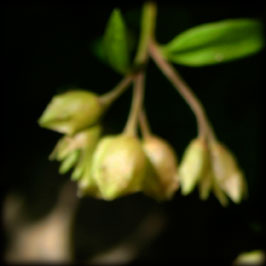Greek Valerian
by Joshua Heston
At first glance, it’s easy to mistake Greek valerian for some sort of bluebell.
The plant is, however, quite different upon inspection.
Valerian tends to grow in large clusters, nearly forming mats of foliage on the ground (Virginia Bluebells grow singly).
This plant is known by many names including Abscess Root, Jacob’s Ladder, and Sweatroot.
Valerian has a long history as a medicinal herb, particularly among the Shakers.
Greek Valerian (Polemonium reptans)
Size: 6-18 inches tall; flowers 1/2 to 3/4 inches wide. What to look for: flowers blue, bell-shaped, in loose cluster; leaves ladder-like, divided into 5 to 15 leaflets. Habitat: rich woods. In bloom: April through June.
— page 419, Wernett, Susan J., et al. North American Wildlife. The Reader's Digest Association, Inc., 1986.
From The Herbal Compendium:
Root: Sudorific. Astringent. Febrifuge. Used in cholera, nervous debility, hysteria, and low forms of fever where a nervous stimulant is required.
—page 183, Shaker Medicinal Herbs: A Compendium of History, Lore and Uses by Amy Bess Miller
A word of safety: folk remedies on StateoftheOzarks are published for informational purposes only. These remedies are never intended to cure, treat or mitigate any disease or disease condition. For questions about disease or disease conditions, consult a qualified healthcare professional.

Plate 1.

Plate 2.

Plate 3.

Plate 4.



